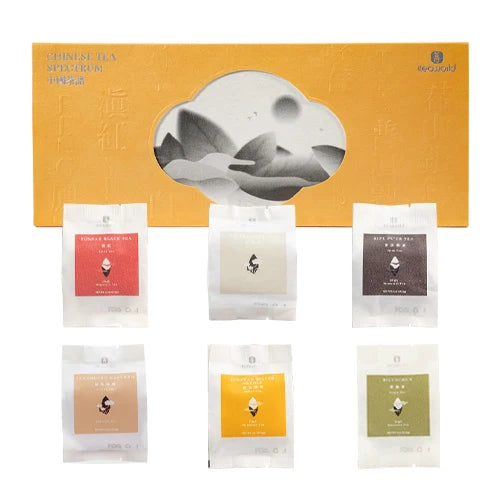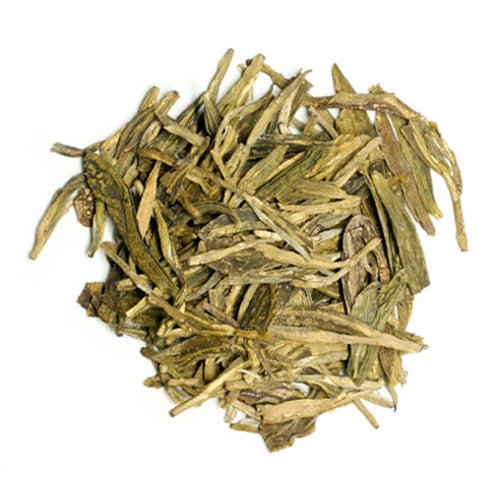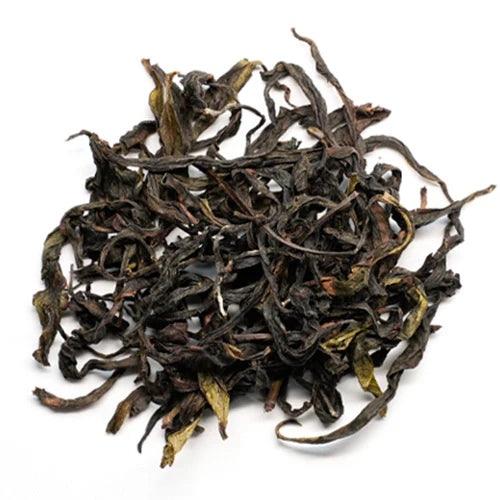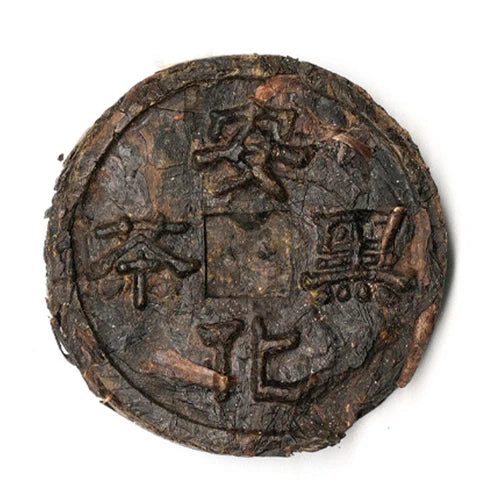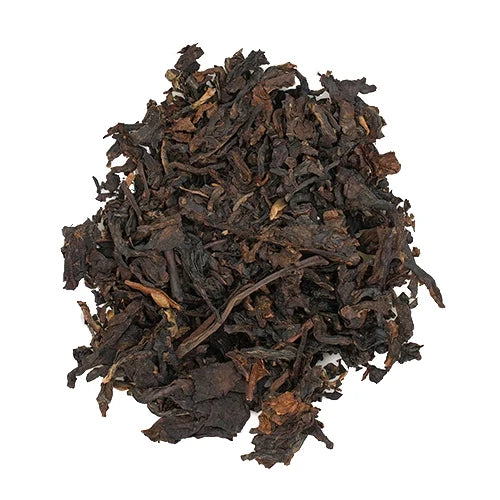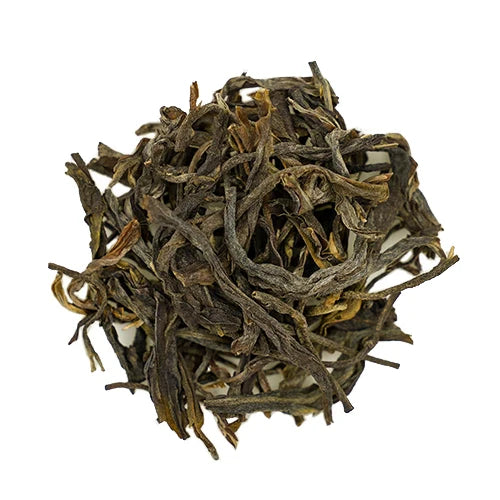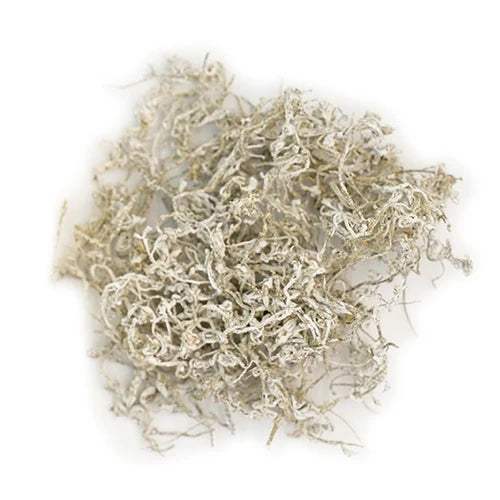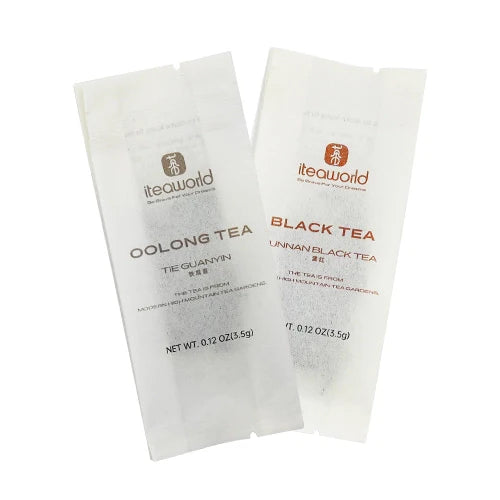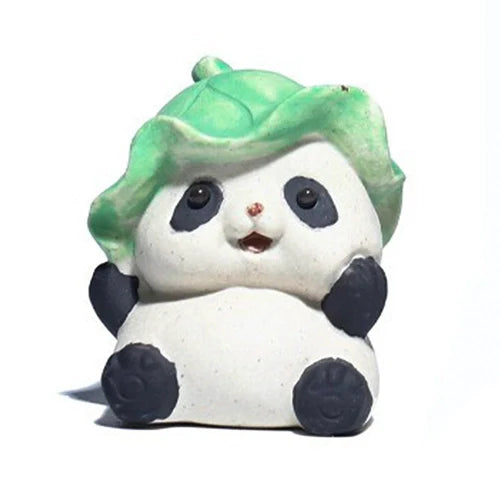Meet Our Tea Farmers

Meet Our Tea Farmers
Madam Huang Jiamei: A Tea Master Disguised as a Cook
on May 19 2025
Tucked away in the misty mountains of Shanglin County, Guangxi, Madam Huang Jiamei might seem at first glance like a modest village cook. She runs a humble shop selling rice noodles and roast duck. But make no mistake—behind the counter stands a true master of wild tea.
Huang Jiamei is one of our tea farmer partners, specializing in wild black tea. She lives in Shanglin County, Nanning, Guangxi—a mountainous region that takes about three hours to reach by car from the Nanning high-speed rail station. Shanglin is a relatively poor county, home to many people of the Zhuang and Yao ethnic minorities.
About ten years ago, as we searched for ancient tea tree resources, we turned to Guangxi Geography Magazine and local tea chronicles. From those pages, we discovered that Daming Mountain might still harbor wild ancient trees. So we traveled there and visited local tea farmers, one household at a time. That’s how we eventually met Madam Huang.
Her black tea was remarkable—so deep and mellow that even a fresh batch tasted like it had aged five years. We later learned this was no accident. She had studied tea-making under a veteran master from the Guangxi Supply and Marketing Cooperative and had become particularly skilled in crafting wild black and green teas from the region.
Tea has a long history in Daming Mountain. In the Travel Notes of Xu Xiake, the famous Ming Dynasty traveler described the mountain as “shrouded in clouds,” an environment both beautiful and ideal for growing tea. Tea cultivation and processing in the area began during the Ming and Qing Dynasties, mainly for local use. In 1956, Guangxi’s Nongken system established the first state-owned tea farm in Daming Mountain, clearing over 100 mu of terraced land and flying in tea seeds—mostly from Yunnan’s large-leaf varieties—to begin large-scale planting.
By 1965, a tea processing plant was up and running, and Daming Mountain had become a key base for broken black tea exports—known for its "dark granules, bright red liquor, and bold flavor". One of the standout local cultivars is Antang Large-Leaf Tea, a native variety rich in amino acids, ideal for black and dark teas. Today, this once-forgotten treasure has been rediscovered. Our wild black tea is made by Madam Huang using precisely this local variety.
This is the handmade tea sign that hangs in front of Madam Huang’s home.
Today, she is the go-to expert for both tea making and tea sales in her village. Most villagers don’t know how to process tea themselves, so they sell their fresh leaves to her, and she handles the rest—from processing to finding buyers.
Madam Huang is a cheerful and devoted mother. While many from the village have left for city jobs, she chose to stay so her two children could grow up with their parents close by. To support her family, she not only makes tea but also sells Guangxi-style rice noodles and roast duck.
When she goes into the mountains to pick tea, she brings with her five-colored sticky rice—naturally dyed using various local plants.
We visited her during peak tea season. She often stays up all night making tea and spends the daytime selling rice noodles and roast duck. Yet her standards never wavered. Take her roast duck, for example: every duck is hand-plucked. “Others often use asphalt to remove feathers,” she told us, “but that’s poisonous. If myself wouldn’t eat it, so how could I sell it to others?” Years of hand-plucking have left her right thumb permanently bent.
Madam Huang is also selective about the teas she makes, using only pesticide-free leaves. She insists that anything meant to be consumed must be safe. Years of tea-making have stained her hands black—stains that can no longer be washed away. When we asked her why she kept making tea, she said, “At first, it was to survive. Then I fell in love with the mountains, with picking tea. And besides, it’s something I can do even when I’m old—it gives me a sense of security.”
She also taught us how to distinguish wild tea from plantation-grown tea. “Wild tea grows thinner, like it's malnourished,” she joked. “But wild varieties are usually native breeds with slower growth cycles. With the same picking standards, they tend to be more tender.”
At her rice noodle shop, tea is always free. Anyone nearby can stop in and pour themselves a cup. This tea is brewed from the sifted fragments left over after red tea processing. It’s not fancy, but it’s warm, fragrant, and satisfying.
And the rice noodles? Unforgettable. The best Guangxi-style noodles we’ve ever had. Sadly, we didn’t get to try her roast duck—it’s so popular that it sells out fast. People travel from far away just to buy it. Honestly, we’ve started to believe that those who master tea...might also be naturally talented cooks, too.
The process of picking and making tea together with Huang Jiamei.
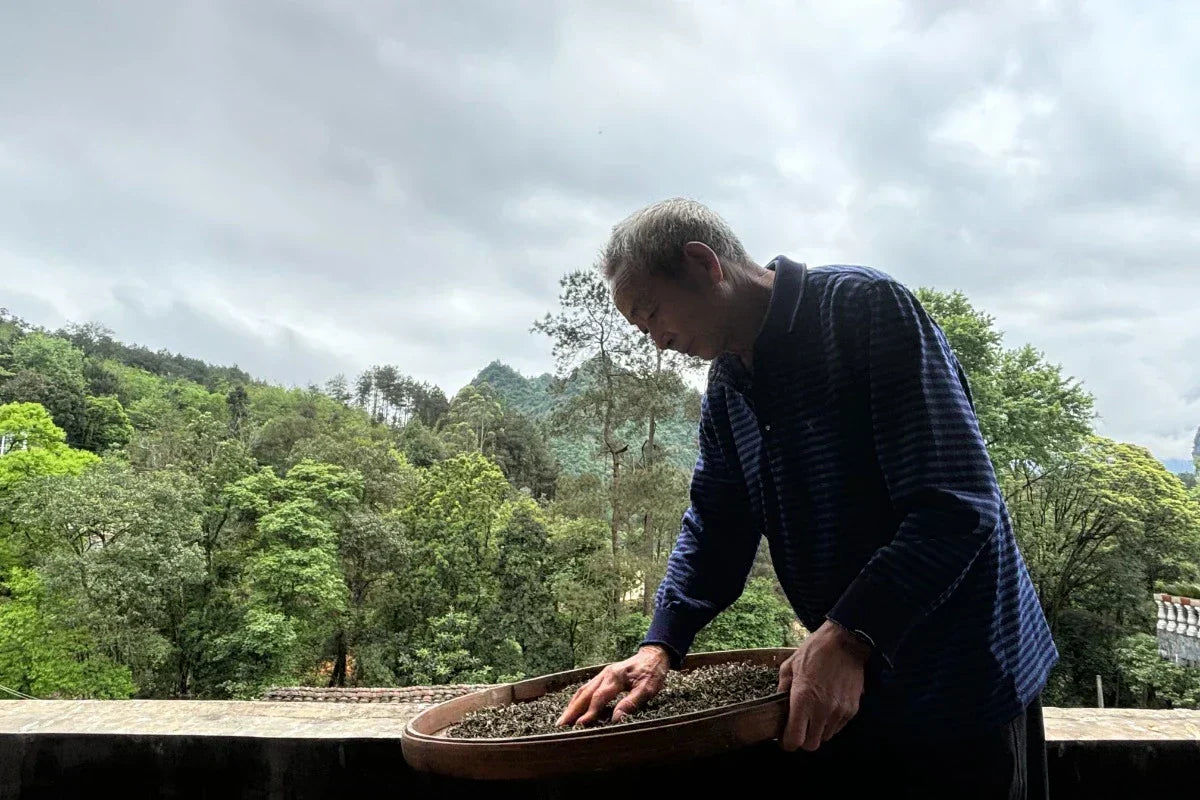
Meet Our Tea Farmers
Grandpa Chen: A Humble Master of Wild Baimao Tea
on May 19 2025
Chen Shangren, born in 1952, has lived his whole life in Dongnan Village, one of the most renowned regions for Kaishan Baimao Tea (a green tea). From a young age, he developed a deep love for tea—especially the wild tea that grows deep in the mountains, in places like Gongdan Chong and Shiban Chong. Processing these wild white-haired teas is also what he does best.
Our paths first crossed with Grandpa Chen in 2015. At the time, we were searching for tea that could produce the distinctive betel-nut aroma unique to premium Liubao tea. This aroma could only come from the Guiqing cultivar. Back then, Guiqing tea in the Liubao region had become quite expensive, so we began looking for a more cost-effective source. Through historical research, we discovered that Kaishan Town had once produced tribute tea for the imperial court—Kaishan Baimao Tea. The region's higher elevation also offered promising conditions, so we began visiting tea farmers in the area, one household at a time.
That's how we met Grandpa Chen. At first, it was his tea that won us over—but soon, we found ourselves drawn to the man himself. Grandpa Chen is a very humble man who doesn't say much, but he has an unshakable confidence in his tea. He speaks candidly and fairly about the quality of other farmers’ teas, never hesitating to point out who does it well and who doesn’t. He is a fair and objective tea master, with a touch of proud integrity.
The View Outside Grandpa Chen’s Home
The tea leaves Grandpa Chen harvests are exceptional. Grown with entirely natural methods that meet European organic food standards, his tea comes from secluded, high-altitude mountain valleys. While he primarily produces green tea (Kaishan Baimao Tea), we later discovered that his leaves, covered in fine white hairs, were also perfect for making white tea. We even used some of his harvest to produce white tea that rivaled—and in terms of cost-performance, even surpassed—Fuding white tea, earning wide acclaim from tea lovers.
Grandpa Chen lives with his wife and their two granddaughters, while their children work in the city. The younger granddaughter, perhaps not used to seeing young people in the village—or missing her mother—followed us around the entire time we were there. When it was time for us to leave, she cried. It was a moment that stayed with us.
Looking at Grandpa Chen’s tea garden and his deep knowledge of tea, we can’t help but wonder—who will carry on his craft? He’s getting older now, and climbing those mountains to pick tea grows harder each year. It’s a concern that weighs on our hearts.
Follow Grandpa Chen and his little granddaughter as they go up the mountain to pick and drink tea.

Meet Our Tea Farmers
One Woman, One Mountain, One Tradition: Auntie Li’s Life in Tea
on May 19 2025
Auntie Li lives in the same village as Grandma Li—they’re neighbors, just a short walk from each other. Though a bit younger, Auntie Li is now in her fifties. She’s been picking and making tea since childhood, learning the craft directly from her father. Among her four siblings, she’s the only one who chose to stay behind and carry on the family’s tea-making tradition.
What makes Auntie Li stand out is her personality—unusually lively and talkative for a tea farmer. She led us through winding mountain paths to visit her tea gardens deep in the hills. The walk was long, and the terrain steep. Many have already given up harvesting from these distant plots. But not Auntie Li. When we asked her why she stayed, she smiled and said: "I chose to stay because I love the mountains, and I love making tea. Life here is simple, but it fills me with peace and purpose. If I went to the city at my age, all I could do would be hard labor. But here, making tea in my own home, I feel free."
The View in Front of Auntie Li’s Home
When we visit tea farmers, it’s rare for them to introduce others—they usually focus on their own harvest. Auntie Li was different. She hoped we could work with more villagers, and personally guided us to several neighboring tea farmers. From their warm welcomes, we realized just how hard it is for local growers to sell their tea. Of course, their hospitality was genuine and unforced.
Auntie Li is Taking Us to Visit Nearby Tea Farmers
As we walked along the roadside, Auntie Li suddenly spotted a wild tea bush clinging to the steep slope. Without hesitation, she climbed up—carefully but boldly—risking a slip just to pluck a few tender leaves.
In Auntie Li’s village, the tea trees are never pruned or treated—left to grow naturally in the deep forest. The villagers are mostly elderly now, and the tea gardens lie far from home. A round trip is exhausting, and few have the energy to manage the land anymore.
Auntie Li’s Tea Gardens – Deep in the Mountains, Growing Wild and Free
Here, dark tea is the everyday brew—specifically Liubao tea, which originated in Cangwu County. Locals steep a pot to sip throughout the day, using it to cool down and relieve fatigue. When guests arrive, they’ll always be offered a cup. Liubao tea is known for its mild nature and especially its ability to dispel internal dampness—a common ailment in the region’s hot and humid climate. Back in the late 19th and early 20th centuries, Liubao tea became a lifeline for Chinese laborers in Southeast Asia. It was cheap, easy to store, and invaluable in harsh working conditions—especially for miners and other laborers.
Even today, Liubao tea remains popular across Southeast Asia. Locals there say its warming, detoxifying qualities make it particularly well-suited to the region’s climate. And of course, it offers a host of other health benefits for those curious to explore further.
This is the process of us going up the mountain with Auntie Li to pick tea.
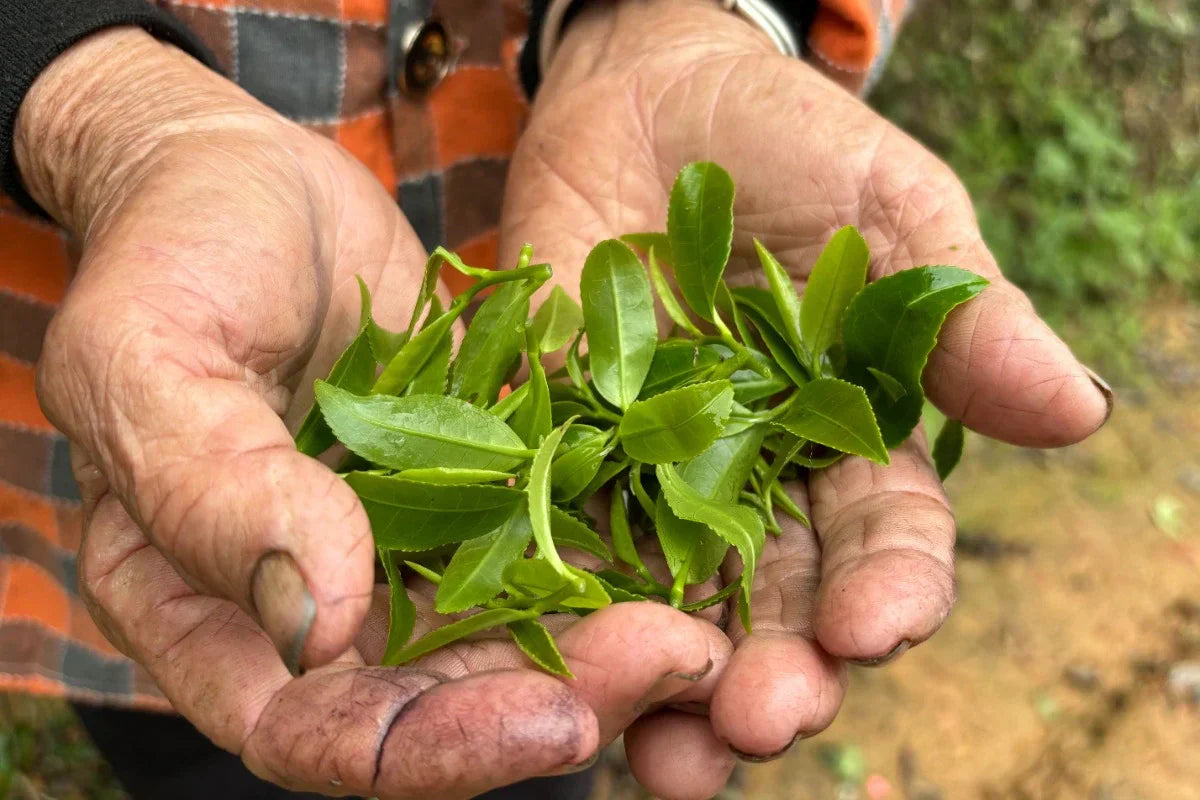
Meet Our Tea Farmers
The Mark of Tea: Grandma Li’s Hands
on May 16 2025
We met Grandma Li back in 2015.
She’s now in her seventies, living a quiet life with her husband at the foot of a mountain in Cangwu County, Wuzhou, Guangxi. Her specialty? Liu Bao tea. And not just any Liu Bao — hers is, in our opinion, the very best in the village. The way she balances craftsmanship and raw materials is simply exceptional.
Every year, she produces a few hundred jin of Liu Bao maocha, and we buy it all.
Her home is one of the few remaining traditional black-brick houses in the region. It has a three-room, two-corridor layout. The center hall serves for hosting guests and honoring ancestors, while the side rooms are bedrooms. Additional side wings, used as kitchen or storage rooms, give the home a peaceful courtyard layout. Like many of the skilled tea farmers we visit, her home is spotless — a quiet kind of order that speaks volumes.
Making tea is a meticulous craft. Temperature, humidity, roasting time, rolling pressure, fermentation — every tiny detail can affect the final quality. People who excel at this craft often have a deep sensitivity to detail, a strong sense of control, of rhythm and order. That habit naturally extends into their lives and into the way they keep their homes.
These are Grandma Li’s hands. Many veteran tea makers — those who truly process tea by hand — have dark stains on their fingers: deep brown or even black. At first glance, they might look like dirt that won’t come off. But these marks aren’t from being unclean. They’re the marks of tea.
During tea processing — especially during rolling, fixing, and roasting — tea polyphenols undergo oxidation. That’s the science behind the changing colors of Oolong and black tea. When hands are in contact with large amounts of fresh tea leaves, the juice seeps into the skin and reacts with oxygen in the air, creating thearubigins and other deep-colored compounds. These marks cling to the skin. They are, quite literally, the imprint of tea craftsmanship.
One time, we asked Grandma Li to take us to her tea garden. It's located halfway up the mountain. We couldn’t believe how quickly she moved — this seventy-something-year-old woman was navigating narrow mountain trails faster than we, much younger, could keep up.
As we climbed, Grandma Li couldn’t help but sigh, “I’m getting old…” Watching her back as she moved steadily up the trail, we felt an unexpected ache in our hearts. This was a path she had walked countless times — just like the way she makes tea, over and over again, day after day, year after year. Not for glory. Not for leisure. Just to make a living.
In these isolated tea regions, only the elderly and left-behind children remain. The young have moved away to find work in the cities. These mountain tea gardens are rarely sprayed with pesticides or intensively managed. Yields are low. The income they generate isn’t enough to support a younger generation.
Grandma Li’s tea-making skills might fade with her. No one may be there to carry them on.
And yet, Grandma Li is just one of thousands of elderly tea makers in these remote mountain regions — a quiet symbol of a fading tradition. With their hands, they craft some of the finest tea in the world. But without access to good sales channels, the money they earn is barely enough to get by.
We want to help — by bringing her tea, and the stories behind it, to more people. Maybe, if we can create a better market, some of those young parents will come home. Maybe they’ll learn from the older generation, stay with their children, and keep this beautiful mountain tradition alive.






